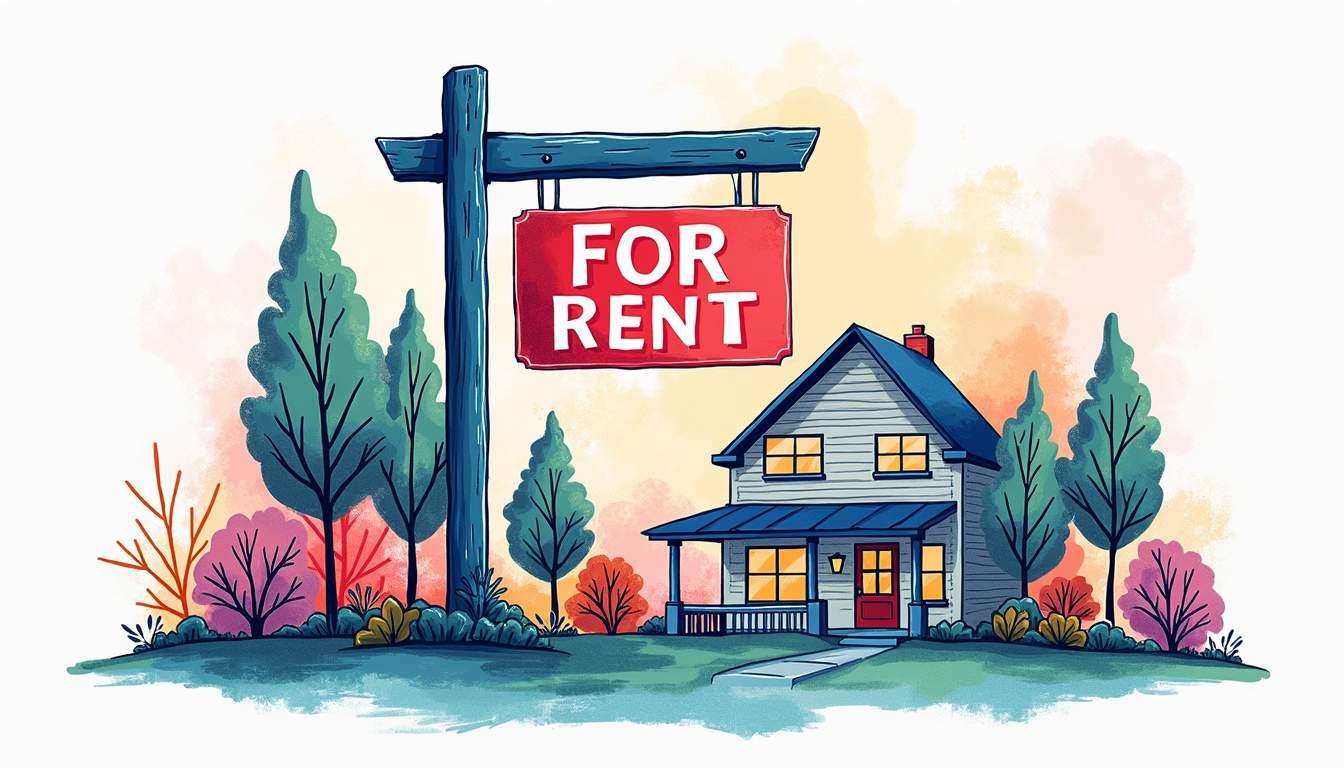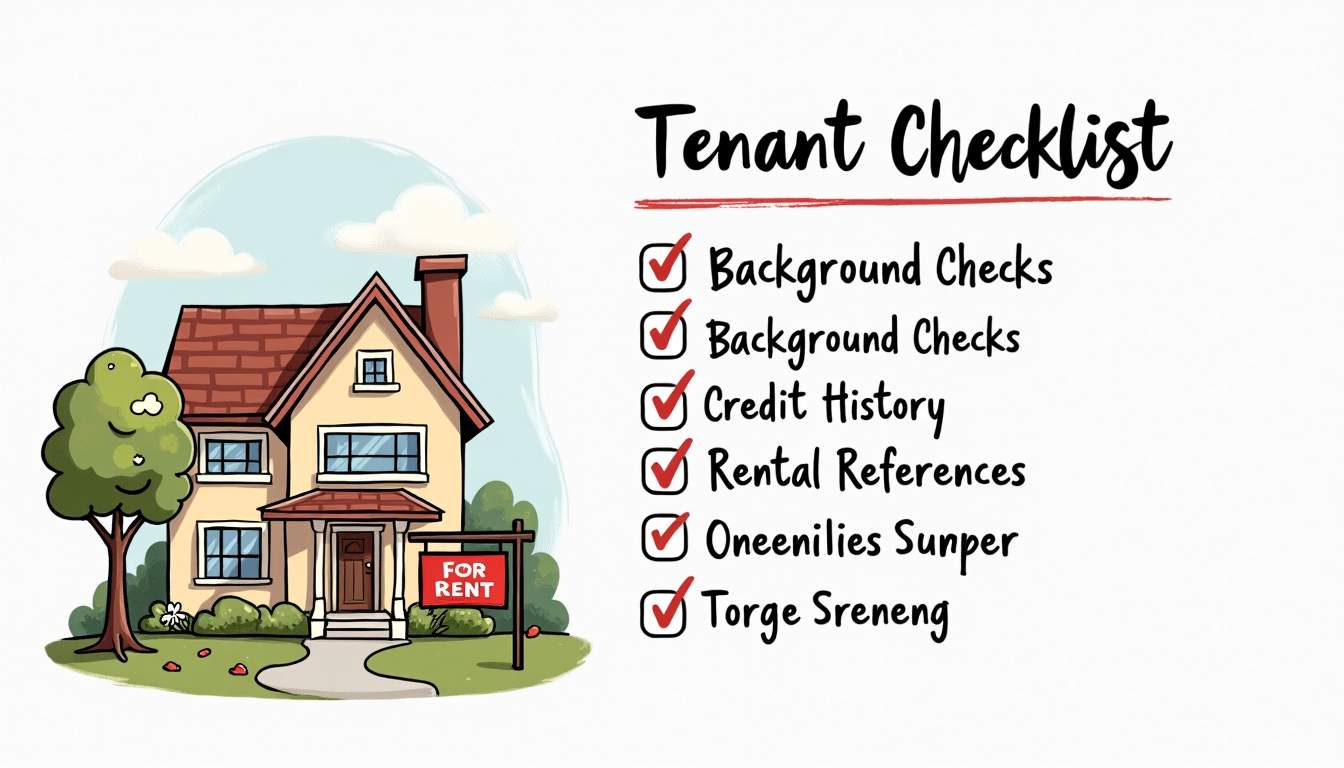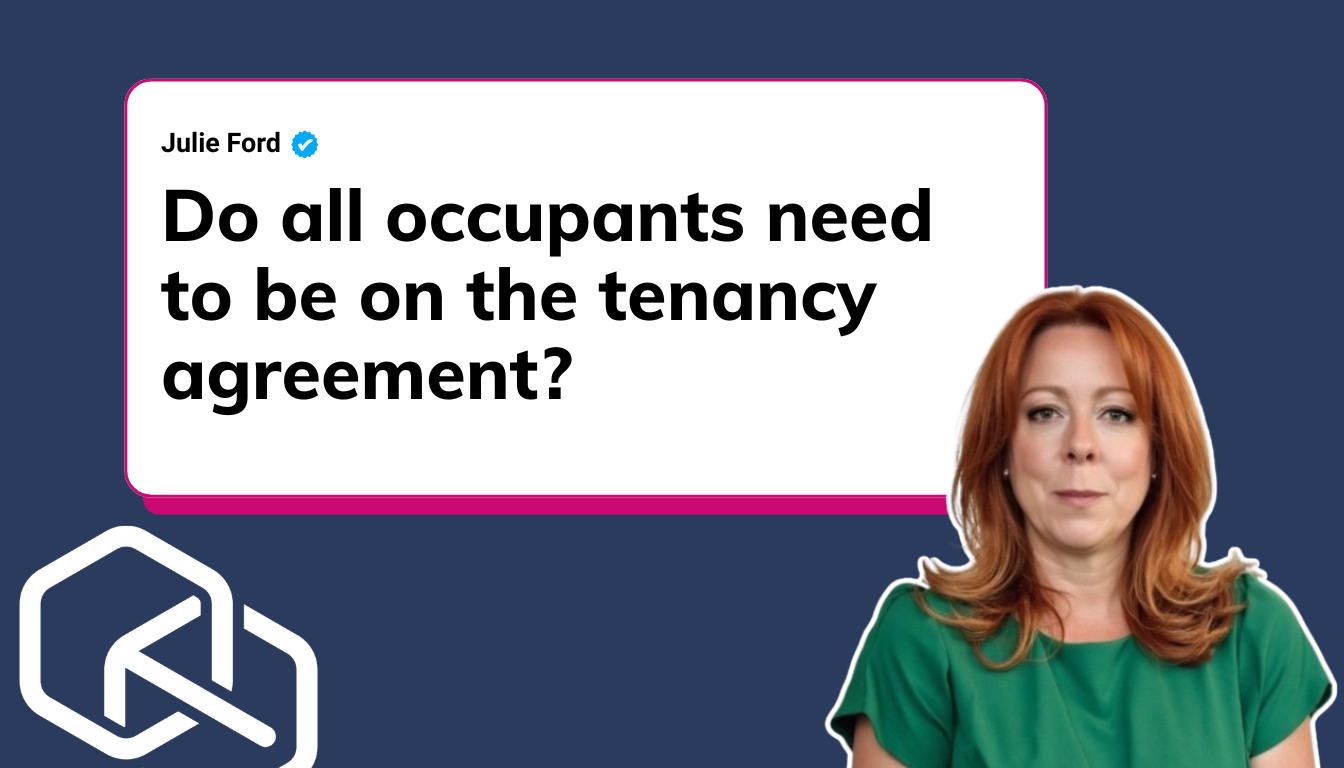Finding good tenants can be one of the most daunting tasks for any landlord in the UK. With the rise in demand for rental properties, it’s essential to navigate the rental market effectively to attract reliable and responsible tenants. This article breaks down the various aspects of understanding the rental market, defining what makes a ‘good’ tenant, and much more.
Understanding the UK Rental Market
The UK rental market is a dynamic landscape influenced by various factors, including economic trends, housing demands, and governmental policies. Gaining a solid understanding of this market is crucial for landlords looking to fill their properties with good tenants.
Key Characteristics of the UK Rental Market
One of the defining characteristics of the UK rental market is its diversity. From city flats to countryside cottages, there is a wide range of properties available (look here at whats available at COHO – Find a Home platform). Additionally, the rental market is supported by various demographic groups, including young professionals, families, and international students.
Another key aspect is the seasonal variation in rental demand. Typically, demand peaks during the summer months when students and young professionals look for new accommodations. Therefore, landlords should consider timing their property availability accordingly. Furthermore, the rise of remote work has also influenced rental preferences, with many tenants seeking homes that offer more space and a conducive work environment, leading to increased interest in suburban and rural areas.
Regional Differences in the UK Rental Market
The rental market varies significantly across different regions of the UK. For instance, London often commands the highest rents due to its status as a global financial hub. In contrast, areas in the North or rural regions tend to have lower rental prices but may also attract long-term residents seeking a quieter lifestyle.
Landlords should keep in mind that regional economic conditions and local amenities greatly influence rental demand. Properties located near universities, public transport, and popular attractions tend to attract a higher number of potential tenants. Additionally, the ongoing development of infrastructure, such as new transport links and shopping facilities, can also enhance the attractiveness of certain areas, leading to potential increases in rental prices over time. It’s essential for landlords to stay informed about local developments and trends to make strategic decisions regarding their investments.
Defining ‘Good’ Tenants
So, what exactly constitutes a ‘good’ tenant? Landlords may have varying definitions based on their needs, but there are several key qualities that are generally recognized across the board.
Financial Stability and Reliability
A good tenant should ideally have financial stability. This means they can consistently pay rent on time and handle any additional costs associated with the property, such as utilities and maintenance. Requesting proof of income and previous rental payment histories can aid in assessing a tenant’s financial reliability.
Landlords may also consider a tenant’s employment status and job stability as indicators of financial security. A steady job typically correlates with a consistent income, reducing the risk of missed payments. Furthermore, a good tenant often has a budget in place that allows them to manage their finances effectively, ensuring they can meet their obligations without stress. This financial foresight not only benefits the tenant but also provides peace of mind for the landlord, knowing that their investment is secure.
Respect for Property and Neighbourhood
Good tenants should demonstrate respect for both the property they are renting and the surrounding neighborhood. This can be gauged through references from previous landlords. Tenants with positive feedback about their property-care habits and interactions with neighbors are often more likely to maintain a healthy living environment.
When interviewing potential tenants, it’s important to discuss house rules and expectations. Ensuring that tenants understand the importance of keeping the property in good condition can lead to fewer disputes down the line. Additionally, tenants who engage positively with their neighbors contribute to a sense of community, which can enhance the overall atmosphere of the area. This mutual respect can foster lasting relationships that benefit everyone, making the neighborhood a more pleasant place to live.
Long-term Rental Intentions
Landlords often prefer tenants who are looking for long-term rentals rather than short-term arrangements. Finding a good tenant who plans to stay for a while can save landlords the hassle and cost of frequent turnover. In conversations with potential tenants, landlords should inquire about their long-term plans to gauge their commitment. Using tools like COHO’s onboarding and viewing tools enables you to guage it via appliation.
Additionally, long-term tenants are likely to build a sense of community, leading to a more stable and harmonious living environment for everyone involved. This stability can also lead to better property maintenance, as tenants who feel a sense of ownership over their living space are more inclined to treat it with care. Moreover, long-term relationships between landlords and tenants can facilitate open communication, making it easier to address any issues that may arise and ensuring that both parties feel valued and respected throughout their rental experience.
Advertising Your Property Effectively

Crafting an Appealing Property Description
When writing a property description, it’s crucial to highlight both the features of the property and the benefits of the location. Use engaging language and be honest about the amenities available. Photos should be high-quality and showcase the property’s best angles.
Employing a captivating title can also make a difference. Using phrases like “spacious family home with garden” or “modern city apartment with stunning views” can immediately catch the attention of potential tenants. Additionally, consider incorporating details that resonate with your target audience, such as proximity to schools, parks, or public transportation. Mentioning nearby attractions, like trendy cafes or recreational facilities, can further entice prospective renters by painting a picture of the lifestyle they could enjoy.
Choosing the Right Advertising Platforms
Utilizing the right advertising platforms is essential for reaching your target audience. Websites like Rightmove and Zoopla are popular for residential properties, allowing landlords to expose their listings to a broad audience.
Social media platforms can also be beneficial for advertising rentals, especially when targeting younger demographics. Using community groups or local housing pages can help connect with potential tenants looking for rentals in your area. Additionally, consider leveraging platforms like Instagram or TikTok to create engaging video tours of your property. These visual formats can showcase the space in a dynamic way, allowing potential tenants to envision themselves living there. Engaging with your audience through comments and direct messages can also foster a sense of community and trust, making your property even more appealing.
The Tenant Screening Process
Screening potential tenants is a crucial step in the rental process. This phase allows landlords to verify information and assess whether the candidates align with their tenant criteria. A thorough screening process not only protects the landlord’s investment but also contributes to a harmonious living environment for all residents.
Essential Checks for Potential Tenants
Background checks are essential in the tenant screening process. These usually include credit checks, employment verification, and previous landlord references. A credit check provides insight into the tenant’s financial history, while employment verification confirms current job status and income levels. Additionally, landlords may want to delve deeper into a tenant’s rental history, looking for patterns such as late payments or evictions that could signal potential issues down the line.
Landlords should also consider personal references, which can provide additional context about the prospective tenant’s character and reliability. These references can come from friends, colleagues, or even community members who can vouch for the tenant’s behavior and lifestyle. Such insights can be invaluable, as they help landlords paint a more complete picture of who they are potentially allowing into their property.
Conducting Interviews with Prospective Tenants
Conducting interviews gives landlords the opportunity to gauge a tenant’s personality and reliability. Having a face-to-face discussion helps establish rapport and allows landlords to articulate their expectations clearly. This interaction can also serve as a platform for tenants to ask questions about the property, the lease terms, and the neighborhood, fostering a sense of transparency and trust from the outset.
During the interview, landlords should ask open-ended questions that invite tenants to share their philosophy on renting and property care. This dialogue often reveals important insights that may not be captured in a standard application. For instance, inquiries about how the tenant plans to maintain the property or their previous experiences with landlords can uncover their level of responsibility and respect for rental agreements. Furthermore, discussing their lifestyle, such as whether they have pets or plan to host frequent guests, can help landlords determine if the tenant will be a good fit for the property and the community. Such thorough discussions not only enhance the screening process but also lay the groundwork for a positive landlord-tenant relationship.
Legal Aspects of Tenant Selection
Understanding the legal aspects of tenant selection is vital for landlords to navigate the rental landscape successfully. Compliance with laws helps protect both landlords and tenants, ensuring fair treatment throughout the renting process.
Understanding Anti-Discrimination Laws
It’s essential to adhere to anti-discrimination laws that guard against unfair treatment. In the UK, it is illegal to discriminate against potential tenants based on attributes such as race, gender, disability, or age. Familiarizing yourself with these laws is key to not only creating an inclusive rental environment but also avoiding legal issues.
Implementing a fair screening process that applies the same criteria to all applicants can help landlords minimize the risk of discrimination claims.
Complying with Right to Rent Checks
Under the Right to Rent legislation, landlords are required to check that their tenants have the legal right to reside in the UK. Failing to conduct these checks can result in severe penalties. This process involves checking official documents, such as passports or visas, that confirm a tenant’s immigration status.
Landlords must keep proper records of checks undertaken to comply with the regulations. This not only keeps you within the legal framework but also safe from potential fines or legal challenges.
In conclusion, finding good tenants in the UK requires a thorough understanding of the rental market, clear definitions of what makes a ‘good’ tenant, effective advertising, diligent screening processes, and a firm grasp of legal responsibilities. By following these guidelines, landlords can not only attract the right tenants but also ensure a successful and smooth rental experience.
Streamline Your Tenant Search with COHO
Ready to take the hassle out of finding and managing good tenants? COHO’s property management software is here to transform the way you handle your rental properties. Whether you’re overseeing HMOs, single-lets, student accommodations, or a diverse rental portfolio, COHO brings efficiency to your fingertips. Experience a seamless, integrated approach to property management that connects all stakeholders in one user-friendly platform. Try COHO for Free today and discover the difference it can make in your rental business.
Finding good tenants can be one of the most daunting tasks for any landlord in the UK. With the rise in demand for rental properties, it’s essential to navigate the rental market effectively to attract reliable and responsible tenants. This article breaks down the various aspects of understanding the rental market, defining what makes a ‘good’ tenant, and much more.
Understanding the UK Rental Market
The UK rental market is a dynamic landscape influenced by various factors, including economic trends, housing demands, and governmental policies. Gaining a solid understanding of this market is crucial for landlords looking to fill their properties with good tenants.
Key Characteristics of the UK Rental Market
One of the defining characteristics of the UK rental market is its diversity. From city flats to countryside cottages, there is a wide range of properties available (look here at whats available at COHO – Find a Home platform). Additionally, the rental market is supported by various demographic groups, including young professionals, families, and international students.
Another key aspect is the seasonal variation in rental demand. Typically, demand peaks during the summer months when students and young professionals look for new accommodations. Therefore, landlords should consider timing their property availability accordingly. Furthermore, the rise of remote work has also influenced rental preferences, with many tenants seeking homes that offer more space and a conducive work environment, leading to increased interest in suburban and rural areas.
Regional Differences in the UK Rental Market
The rental market varies significantly across different regions of the UK. For instance, London often commands the highest rents due to its status as a global financial hub. In contrast, areas in the North or rural regions tend to have lower rental prices but may also attract long-term residents seeking a quieter lifestyle.
Landlords should keep in mind that regional economic conditions and local amenities greatly influence rental demand. Properties located near universities, public transport, and popular attractions tend to attract a higher number of potential tenants. Additionally, the ongoing development of infrastructure, such as new transport links and shopping facilities, can also enhance the attractiveness of certain areas, leading to potential increases in rental prices over time. It’s essential for landlords to stay informed about local developments and trends to make strategic decisions regarding their investments.
Defining ‘Good’ Tenants
So, what exactly constitutes a ‘good’ tenant? Landlords may have varying definitions based on their needs, but there are several key qualities that are generally recognized across the board.
Financial Stability and Reliability
A good tenant should ideally have financial stability. This means they can consistently pay rent on time and handle any additional costs associated with the property, such as utilities and maintenance. Requesting proof of income and previous rental payment histories can aid in assessing a tenant’s financial reliability.
Landlords may also consider a tenant’s employment status and job stability as indicators of financial security. A steady job typically correlates with a consistent income, reducing the risk of missed payments. Furthermore, a good tenant often has a budget in place that allows them to manage their finances effectively, ensuring they can meet their obligations without stress. This financial foresight not only benefits the tenant but also provides peace of mind for the landlord, knowing that their investment is secure.
Respect for Property and Neighbourhood
Good tenants should demonstrate respect for both the property they are renting and the surrounding neighborhood. This can be gauged through references from previous landlords. Tenants with positive feedback about their property-care habits and interactions with neighbors are often more likely to maintain a healthy living environment.
When interviewing potential tenants, it’s important to discuss house rules and expectations. Ensuring that tenants understand the importance of keeping the property in good condition can lead to fewer disputes down the line. Additionally, tenants who engage positively with their neighbors contribute to a sense of community, which can enhance the overall atmosphere of the area. This mutual respect can foster lasting relationships that benefit everyone, making the neighborhood a more pleasant place to live.
Long-term Rental Intentions
Landlords often prefer tenants who are looking for long-term rentals rather than short-term arrangements. Finding a good tenant who plans to stay for a while can save landlords the hassle and cost of frequent turnover. In conversations with potential tenants, landlords should inquire about their long-term plans to gauge their commitment. Using tools like COHO’s onboarding and viewing tools enables you to guage it via appliation.
Additionally, long-term tenants are likely to build a sense of community, leading to a more stable and harmonious living environment for everyone involved. This stability can also lead to better property maintenance, as tenants who feel a sense of ownership over their living space are more inclined to treat it with care. Moreover, long-term relationships between landlords and tenants can facilitate open communication, making it easier to address any issues that may arise and ensuring that both parties feel valued and respected throughout their rental experience.
Advertising Your Property Effectively

Crafting an Appealing Property Description
When writing a property description, it’s crucial to highlight both the features of the property and the benefits of the location. Use engaging language and be honest about the amenities available. Photos should be high-quality and showcase the property’s best angles.
Employing a captivating title can also make a difference. Using phrases like “spacious family home with garden” or “modern city apartment with stunning views” can immediately catch the attention of potential tenants. Additionally, consider incorporating details that resonate with your target audience, such as proximity to schools, parks, or public transportation. Mentioning nearby attractions, like trendy cafes or recreational facilities, can further entice prospective renters by painting a picture of the lifestyle they could enjoy.
Choosing the Right Advertising Platforms
Utilizing the right advertising platforms is essential for reaching your target audience. Websites like Rightmove and Zoopla are popular for residential properties, allowing landlords to expose their listings to a broad audience.
Social media platforms can also be beneficial for advertising rentals, especially when targeting younger demographics. Using community groups or local housing pages can help connect with potential tenants looking for rentals in your area. Additionally, consider leveraging platforms like Instagram or TikTok to create engaging video tours of your property. These visual formats can showcase the space in a dynamic way, allowing potential tenants to envision themselves living there. Engaging with your audience through comments and direct messages can also foster a sense of community and trust, making your property even more appealing.
The Tenant Screening Process
Screening potential tenants is a crucial step in the rental process. This phase allows landlords to verify information and assess whether the candidates align with their tenant criteria. A thorough screening process not only protects the landlord’s investment but also contributes to a harmonious living environment for all residents.
Essential Checks for Potential Tenants
Background checks are essential in the tenant screening process. These usually include credit checks, employment verification, and previous landlord references. A credit check provides insight into the tenant’s financial history, while employment verification confirms current job status and income levels. Additionally, landlords may want to delve deeper into a tenant’s rental history, looking for patterns such as late payments or evictions that could signal potential issues down the line.
Landlords should also consider personal references, which can provide additional context about the prospective tenant’s character and reliability. These references can come from friends, colleagues, or even community members who can vouch for the tenant’s behavior and lifestyle. Such insights can be invaluable, as they help landlords paint a more complete picture of who they are potentially allowing into their property.
Conducting Interviews with Prospective Tenants
Conducting interviews gives landlords the opportunity to gauge a tenant’s personality and reliability. Having a face-to-face discussion helps establish rapport and allows landlords to articulate their expectations clearly. This interaction can also serve as a platform for tenants to ask questions about the property, the lease terms, and the neighborhood, fostering a sense of transparency and trust from the outset.
During the interview, landlords should ask open-ended questions that invite tenants to share their philosophy on renting and property care. This dialogue often reveals important insights that may not be captured in a standard application. For instance, inquiries about how the tenant plans to maintain the property or their previous experiences with landlords can uncover their level of responsibility and respect for rental agreements. Furthermore, discussing their lifestyle, such as whether they have pets or plan to host frequent guests, can help landlords determine if the tenant will be a good fit for the property and the community. Such thorough discussions not only enhance the screening process but also lay the groundwork for a positive landlord-tenant relationship.
Legal Aspects of Tenant Selection
Understanding the legal aspects of tenant selection is vital for landlords to navigate the rental landscape successfully. Compliance with laws helps protect both landlords and tenants, ensuring fair treatment throughout the renting process.
Understanding Anti-Discrimination Laws
It’s essential to adhere to anti-discrimination laws that guard against unfair treatment. In the UK, it is illegal to discriminate against potential tenants based on attributes such as race, gender, disability, or age. Familiarizing yourself with these laws is key to not only creating an inclusive rental environment but also avoiding legal issues.
Implementing a fair screening process that applies the same criteria to all applicants can help landlords minimize the risk of discrimination claims.
Complying with Right to Rent Checks
Under the Right to Rent legislation, landlords are required to check that their tenants have the legal right to reside in the UK. Failing to conduct these checks can result in severe penalties. This process involves checking official documents, such as passports or visas, that confirm a tenant’s immigration status.
Landlords must keep proper records of checks undertaken to comply with the regulations. This not only keeps you within the legal framework but also safe from potential fines or legal challenges.
In conclusion, finding good tenants in the UK requires a thorough understanding of the rental market, clear definitions of what makes a ‘good’ tenant, effective advertising, diligent screening processes, and a firm grasp of legal responsibilities. By following these guidelines, landlords can not only attract the right tenants but also ensure a successful and smooth rental experience.
Streamline Your Tenant Search with COHO
Ready to take the hassle out of finding and managing good tenants? COHO’s property management software is here to transform the way you handle your rental properties. Whether you’re overseeing HMOs, single-lets, student accommodations, or a diverse rental portfolio, COHO brings efficiency to your fingertips. Experience a seamless, integrated approach to property management that connects all stakeholders in one user-friendly platform. Try COHO for Free today and discover the difference it can make in your rental business.











